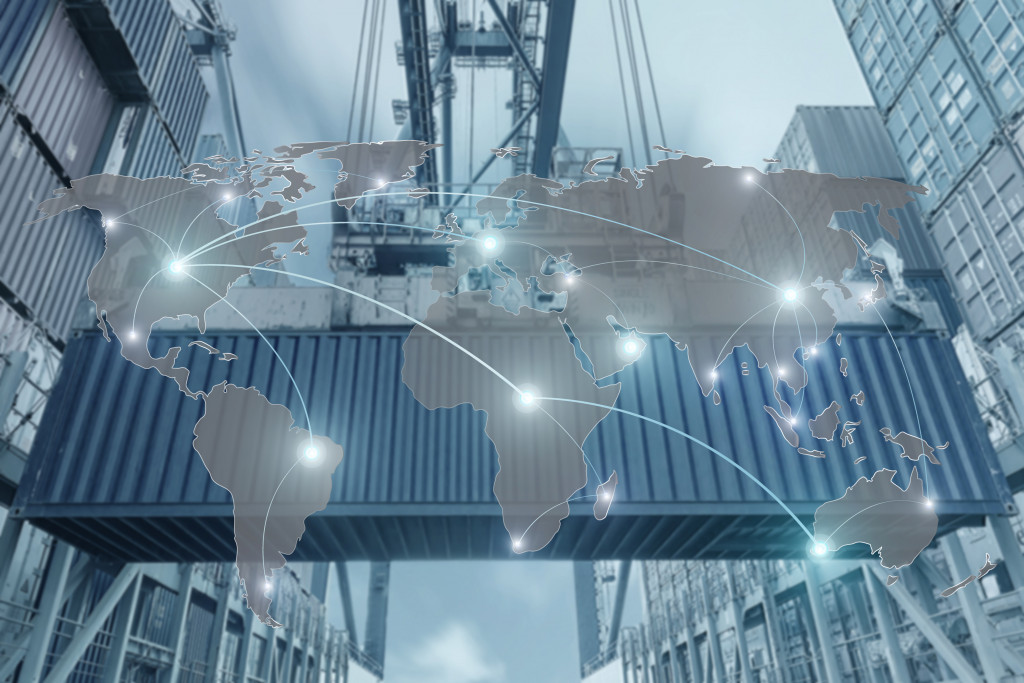Technology has always been a major part of logistics, but recent advances have made the field more efficient than ever. In fact, many of the latest innovations can reduce delays and errors and save money. Here are some examples logistics companies use to enhance their operations and streamline their processes.
Automation and Robotics:
Automation and robotics are two of the most important advancements in logistics technology. With these tools, businesses can automate mundane tasks such as sorting and packing as well as complex tasks such as route planning. Automation also enables companies to reduce labor costs while increasing productivity.
Automation also enables real-time tracking of shipments, so businesses know exactly where their products are at all times. For example, automated sorting systems can quickly and accurately sort packages for faster delivery times.
Automated robotic arms are also used in warehouses to pick, pack, and move items precisely and quickly. Assisted by people, the robots can reduce the amount of labor needed to fulfill orders.
Artificial Intelligence (AI):
AI is quickly becoming an integral part of logistics operations. AI-powered systems can help optimize delivery routes, predict customer demand, and identify potential issues before they become costly problems.
More specifically, there are efficient tire management systems that can predict when tires need to be replaced before they wear out. This helps prevent delays due to tire failure while also helping companies save money on maintenance costs.
This is especially helpful for maintaining the company’s fleet of vehicles, which can be expensive to manage. With these AI-driven tools, businesses can prioritize their tire maintenance to ensure the vehicles are in good condition when they set out on the road.
Big Data:
Big data is one of the most powerful tools for optimizing logistics operations. By collecting vast amounts of data from customers, suppliers, and other sources, businesses can gain deep insights into customer behavior, supply chains, and much more.
This information can then be used to create more efficient processes or spot trends before they happen — enabling companies to stay ahead of the competition. For instance, businesses can use big data to identify the most profitable delivery routes or target potential customers who are more likely to buy their products.
Moreover, big data can also be used to reduce errors, such as incorrect deliveries or late shipments. By analyzing data points in real time, businesses can quickly identify and address any problems before they become serious issues.

Cloud Computing:
Many logistic providers are now leveraging cloud computing services to store and manage large amounts of data in real-time — allowing teams to access information quickly from any location with an internet connection. Cloud services also provide scalability by allowing companies to increase storage space as needed without having to purchase additional hardware or software licenses.
This saves them money in the long run while still giving them access to powerful tools like analytics software or machine learning algorithms that would otherwise be out of reach due to cost barriers. There are even cloud-based solutions that enable businesses to manage their supply chain in real time — helping them ensure the right products reach the right customers at the right time.
Additionally, cloud computing services can also be used to streamline operations with automatic updates, notifications, and other features that help keep teams organized and efficient.
Internet Of Things (IoT):
IoT technology is rapidly changing how logistics companies track shipments and monitor inventory levels in real time through connected devices like RFID tags or sensors on containers and vehicles. This offers tremendous opportunities for businesses looking for ways to improve efficiency by keeping tabs on every aspect of their supply chain — from production stages all the way through delivery services at customers’ doorsteps.
A good example of this is the use of RFID tags to track shipments and make sure they are delivered on time. With this technology, businesses can quickly determine when a shipment is delayed or misdirected, enabling them to take corrective action immediately.
Furthermore, IoT devices can also be used to detect and predict potential issues before they become serious problems, such as vehicle breakdowns or delays due to bad weather.
As you can see, there are plenty of ways that businesses can use technology to improve their logistical operations — from automation and robotics to AI and big data analysis; there’s no shortage of solutions available for those looking for increased efficiency in their workflows. So if your business isn’t taking advantage of these cutting-edge technologies yet — now might be a great time to start!
